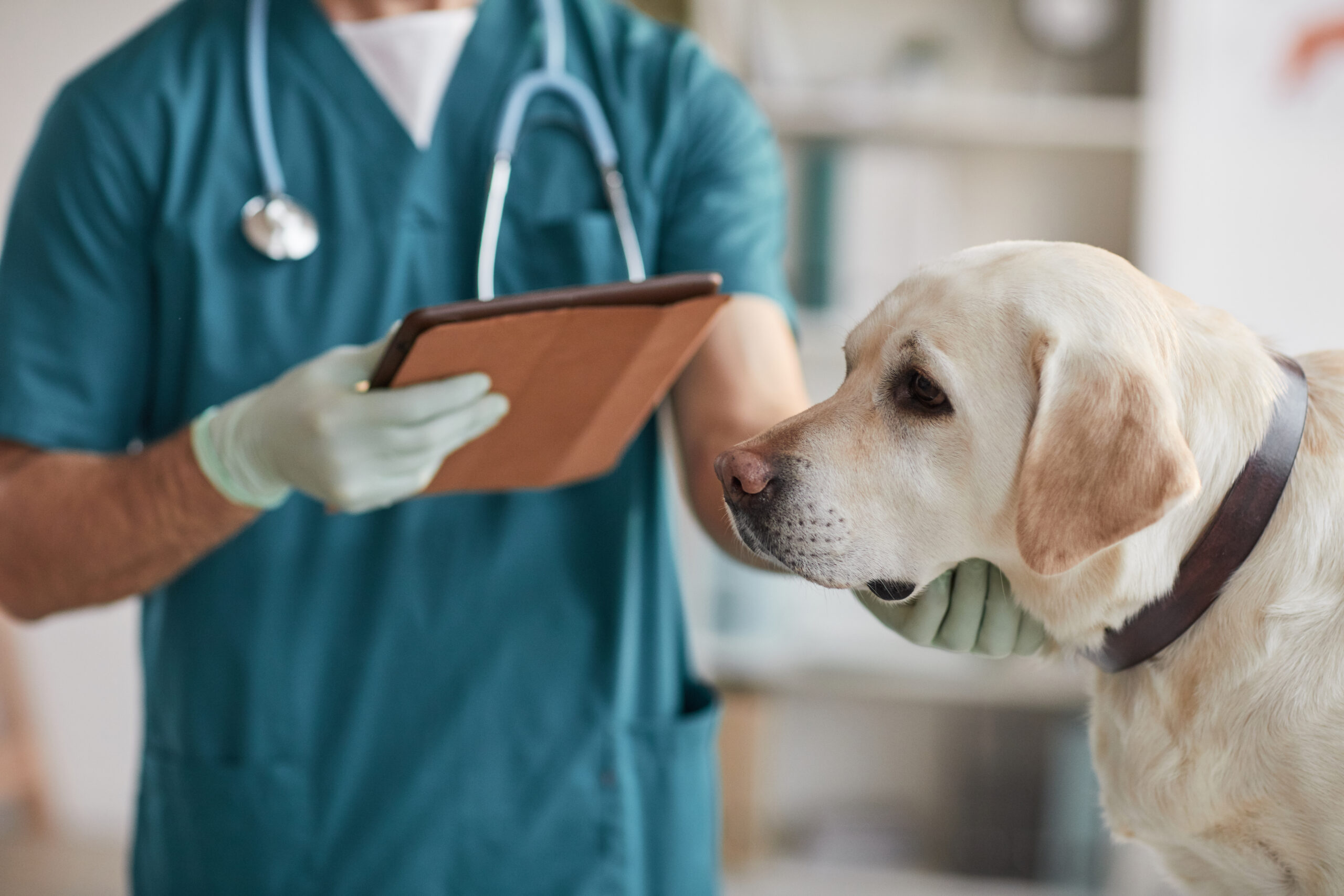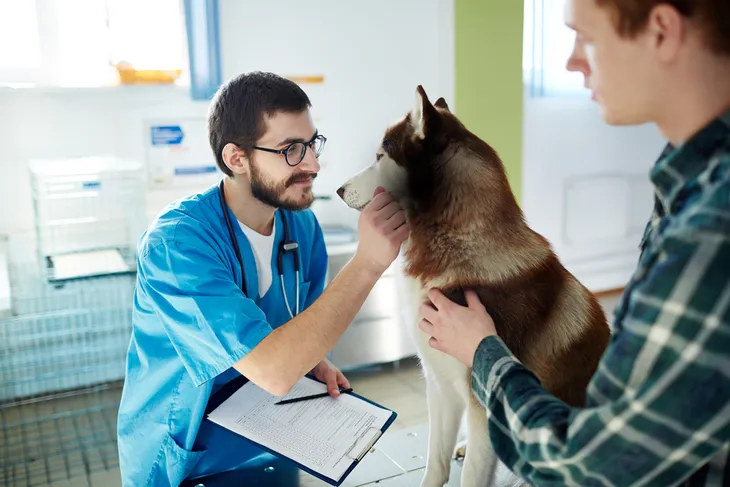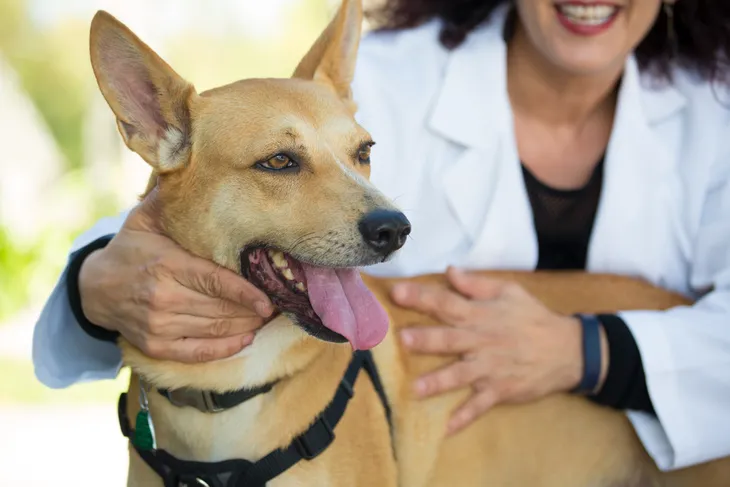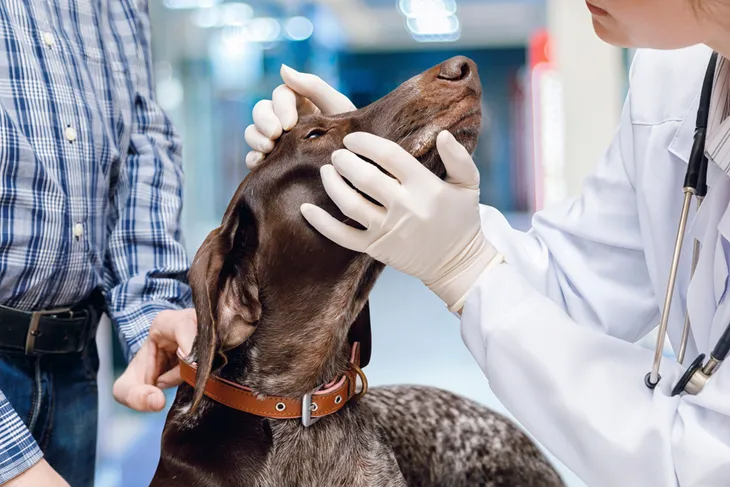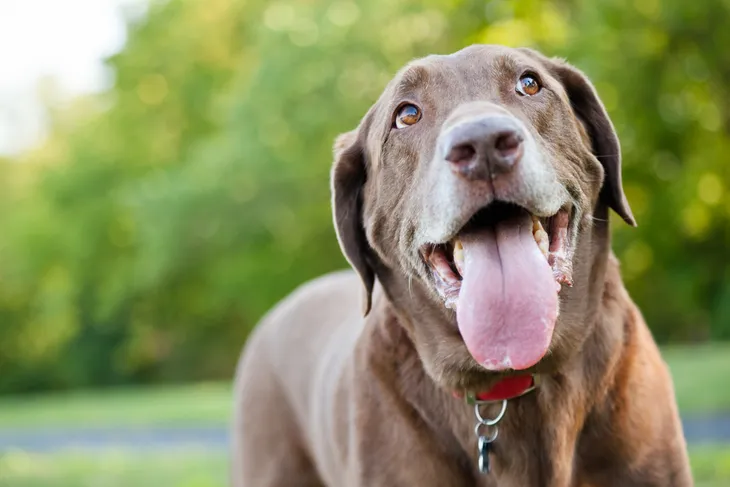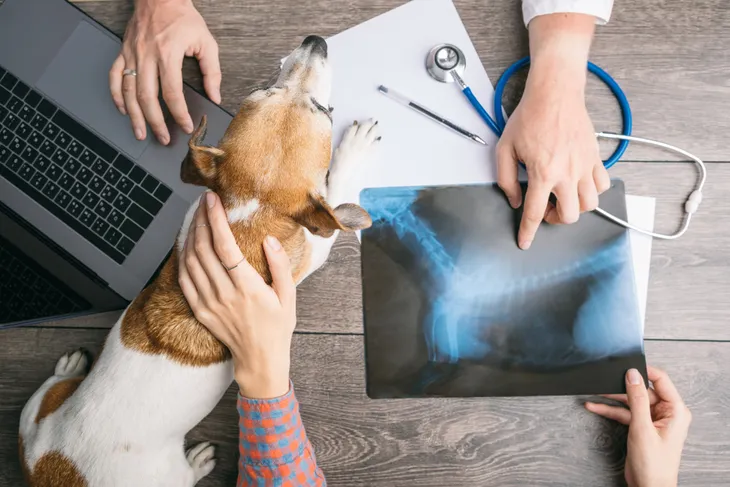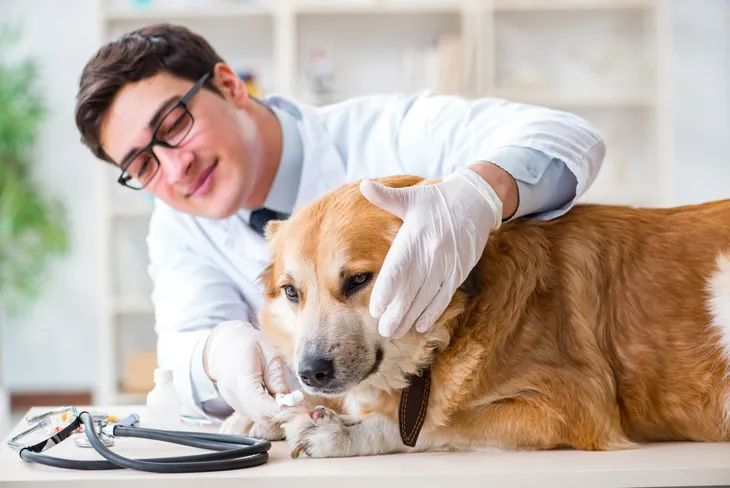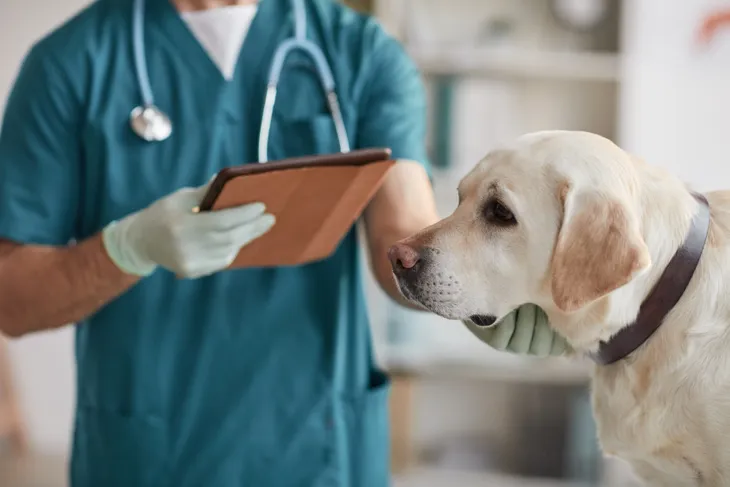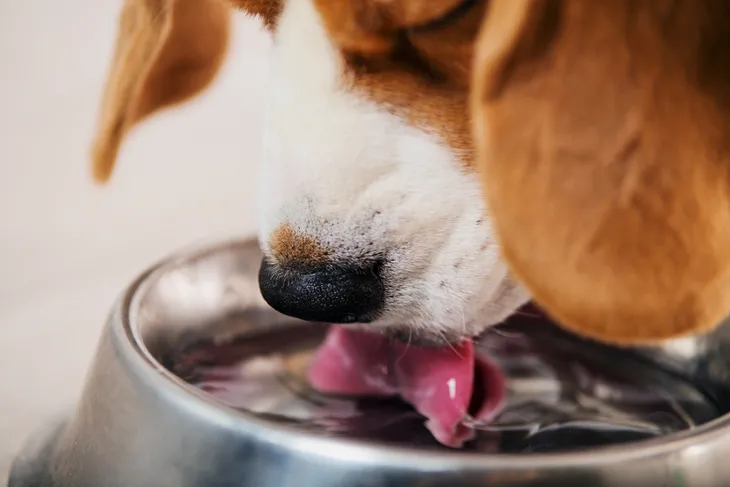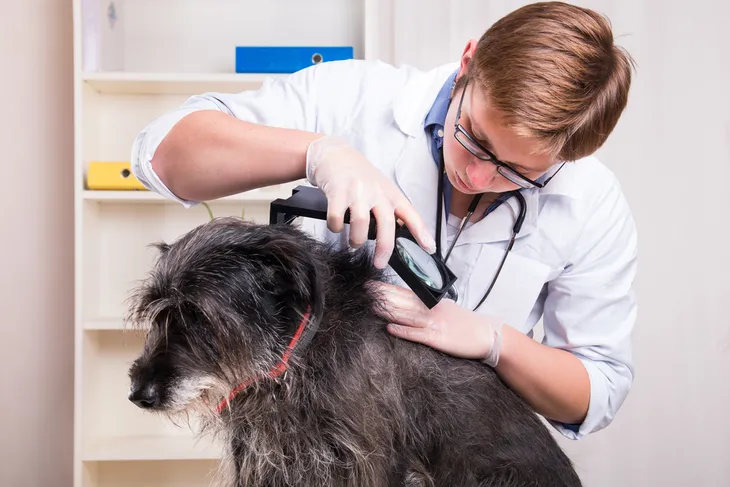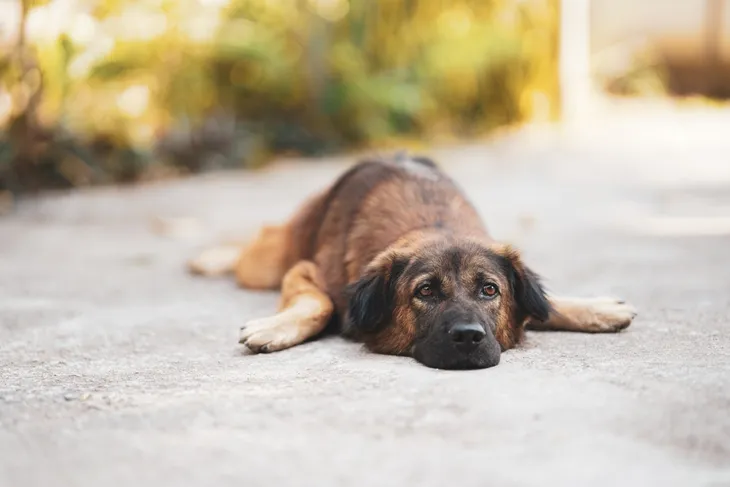- Many lymphoma symptoms in dogs mimic other health conditions, so confirming a diagnosis with your vet is important.
- It’s difficult to figure out whether your dog has a positive prognosis without first determining what stage the disease is in.
- Dogs may be able to undergo chemotherapy, radiation and surgery with positive results and tolerable side effects.
Just like humans, dogs have a significant risk of developing cancer at some point in their lives. Advances in veterinary care mean that a cancer diagnosis isn’t always fatal, and there’s hope that your dog can return to an active, healthy life with proper care.
Canine lymphoma is one of the most common types of cancer your dog might experience. Here’s what you need to know, including the common types and symptoms to look out for. We’ll also look into what causes lymphoma and the treatment options available.
What Are the Most Common Types of Lymphoma in Dogs?
Lymphoma is a type of cancer that affects the lymphatic system. Your dog’s lymph nodes, spleen, and bone marrow contribute to producing white blood cells that help fight off disease and infections. Canine lymphoma affects these organs and the effectiveness of your dog’s immune response.
There are over 30 known types of canine lymphoma with varying degrees of severity and symptoms. While hearing that your dog is diagnosed with cancer can be worrying, you shouldn’t panic until your vet does more tests. Depending on the type of lymphoma, your dog may qualify for treatment and be able to return to an active, healthy life.
Multicentric Lymphoma
The most common type of canine lymphoma is multicentric lymphoma. It affects lymph nodes throughout the body and might cause them to swell beyond three times their normal size.
Veterinarians diagnose this condition by first confirming the swelling of your dog’s lymph nodes and then taking a tissue biopsy. Your dog’s outlook could depend on a variety of factors such as how far along the cancer is, your dog’s age, and other underlying health conditions.
Extranodal Lymphoma
Extranodal lymphoma targets specific organs such as your dog’s breasts, liver, eyes, or bones. It’s the least common type of lymphoma in dogs and needs treatment quickly, or the condition becomes fatal within 6-weeks.
Your veterinarian may need to extract some of your dog’s bone marrow for a biopsy to confirm the diagnosis and recommend treatment options. Many dogs diagnosed in extranodal lymphoma’s early stages have favorable outcomes, so discuss your treatment options carefully with your vet.
Mediastinal Lymphoma
Mediastinal lymphoma is a type of lymphoma that affects the lungs. Your dog may have difficulty breathing due to tumors that compress the lungs and fluid buildup in the chest.
Mediastinal lymphoma is relatively rare, but there are several treatment options available that could have positive outcomes. Dogs with this type of lymphoma may also have ulcers and skin lesions, so discuss whether surgery is an appropriate course of action to remove them with your vet.
Alimentary Lymphoma
Alimentary lymphoma affects the gastrointestinal tract and could cause decreased appetite, vomiting, frequent diarrhea, and sudden weight loss. Dogs with this type of cancer need prompt treatment because it hinders their ability to absorb nutrients in food and may make them stop eating altogether.
Your veterinarian may need to perform an X-ray or imaging scan along with a biopsy to confirm the diagnosis before discussing your treatment options. Your dog’s outlook depends on the severity and stage of the disease.
Causes of Canine Lymphoma
Canine and human lymphoma have a lot of similarities, and nobody knows for sure what causes this type of cancer to develop. There are theories that exposure to certain magnetic fields in our environment, poor dietary choices, and genetics all play a role in a dog’s risk of developing cancer.
Some researchers have also suggested that herbicides containing phenoxyacetic acid may increase a dog’s chance of suffering from some form of lymphoma during their life.
Common Symptoms of Lymphoma
Most dog owners know when something’s not right with their pets due to changes in behavior, appetite, and energy levels. The visible appearance of lumps and tumors is a clear sign that a vet should check your dog, but there are other symptoms that you shouldn’t overlook.
Keep in mind that these symptoms may indicate other conditions as well, so you shouldn’t rush to conclusions. Even if your dog does have lymphoma, treatment options are becoming more accessible and effective.
Gastrointestinal Distress
Changes in your dog’s digestive health often indicate your dog needs a trip to the vet. If you notice frequent vomiting, diarrhea, or decreased appetite, this could mean that something’s wrong.
Another symptom of gastrointestinal distress is abdominal discomfort. If you see that your dog responds to light pressure against their abdomen by pulling away or wincing, accompanied by the other symptoms listed above, you shouldn’t wait to get your dog seen by the vet.
Weight Loss
Weight gain and loss are common in dogs, especially when they get a variety of foods in the form of treats. Factors that influence weight include energy level, activity, diet, and age.
If you notice that your dog is losing weight and can’t figure out why, it’s time to take them to the vet to get to the root of the issue. Weight loss is a common symptom of lymphoma and other types of cancers.
Swollen Lymph Nodes
Feeling lumps on your dog can be frightening, but it doesn’t always mean they have cancer. However, if you notice that your dog’s lumps are on their lymph nodes, this could indicate lymphoma.
Your dog has lymph nodes throughout their body, located in their neck, chest, underarms, behind their knees, and near their groin. Canine lymphoma can cause the lymph nodes to double or triple in size, so take your dog to the vet if you notice swelling or tumors in these areas.
Increased Thirst or Frequent Urination
It can be difficult to tell how much water a dog needs because their thirst varies depending on their activity level, seasonal weather, and other health conditions. If you notice that your dog is suddenly drinking significantly more than you remember or begs to go outside frequently, they could have one of several medical conditions. I
t’s important to rule out other things, such as a urinary tract infection or diabetes, before assuming your dog has lymphoma.
Skin Lesions
Extranodal lymphoma can affect your dog’s skin, resulting in numerous skin bumps, ulcers, or lesions. You can usually tell if your dog has a skin condition when they begin to pick at the same area repeatedly and their skin has a scaly appearance.
You may also notice lesions inside your dog’s mouth, near their eyes, or around their lips. If these lesions are near your dog’s eyes, delayed treatment can result in permanent vision loss.
Difficulty Breathing
If your dog has tumors or swollen lymph nodes in their chest, it can be difficult for them to breathe. This is due to direct pressure against the lungs and fluid buildup that may mimic pneumonia symptoms.
Your dog may also have lung tumors that could affect their breathing. If you notice that your dog struggles to breathe, coughs frequently or tires after minimal exertion, make an appointment with your vet.
Treatment Options and Prognosis
Several treatment options are available for canine lymphoma. Whether your dog has a positive prognosis depends on the cancer’s stage and severity and if any other health conditions could complicate treatment.
Your veterinarian needs to confirm the diagnosis with a tissue sample from the affected organs before prescribing a treatment plan. Other treatment options include surgical removal of the tumors and radiation therapy. Your veterinarian will discuss the best treatment option for your dog based on the stage and type of lymphoma.
Treatment Side Effects
Chemotherapy is an effective treatment method for many dogs with lymphoma, and dogs react differently to it than humans. Only several breeds experience hair loss, and nausea is much milder in dogs undergoing chemotherapy than in humans.
Your dog may act more lethargic and eat less while receiving chemotherapy. If your dog requires radiation, the side effects may be more serious, and your vet will give you specific home care instructions following surgery to keep your dog comfortable.
